Yellowwood, Cladrastis kentukea
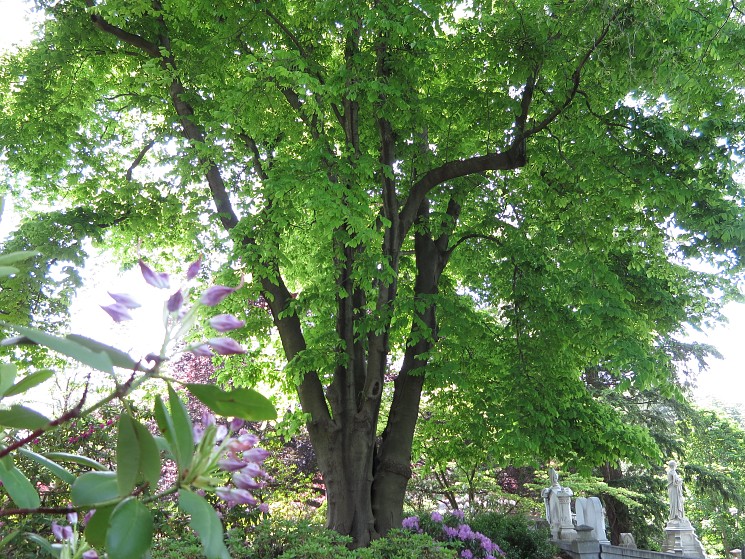
And what is so rare as a day in June?
James Russell Lowell (Lot 323 Fountain Avenue)
Then, if ever, come perfect days.
Perhaps you soon will enjoy one of those rare June days that Lowell waxed poetically about. Perchance you could be here at Mount Auburn, enjoying the reality envisioned by our prophetic founder Jacob Bigelow (1787-1879), professor of materia medica at Harvard Medical School for four decades. Recall a bit of his own pre-Mount Auburn abbreviated advocacy, “Travelers and mourners alike would be drawn by the place where… by the joint influence of nature and art… a landscape of the most picturesque character will be created.” Here, early to mid-June, our picturesque landscape is elegantly enhanced by a dozen Cladrastis kentukea, Yellowwood. This flowering tree is one of our nation’s alluring arboreal attractions. In bloom the white, fragrant flowers occur in 8-14-inch-long pendulous panicles, hanging from the branch tips, a sight reminiscent of white wisteria.
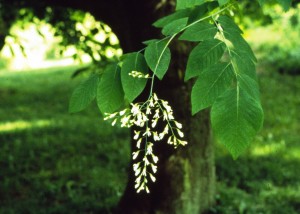
The individual 1-1 ½-inch-long flowers are papilionaceous, or pea-like flowers, which have five petals of three different shapes. A single upper petal is referred to as the “banner”, extending laterally on either side are two “wing” petals, and at the bottom are two adjacent “keel” petals. Such flowers shaped like this are common in this botanical family, the FABACEAE, and we also saw these with the redbud tree. These flowers are very attractive to bees which may be buzzing about them throughout the sunny days.
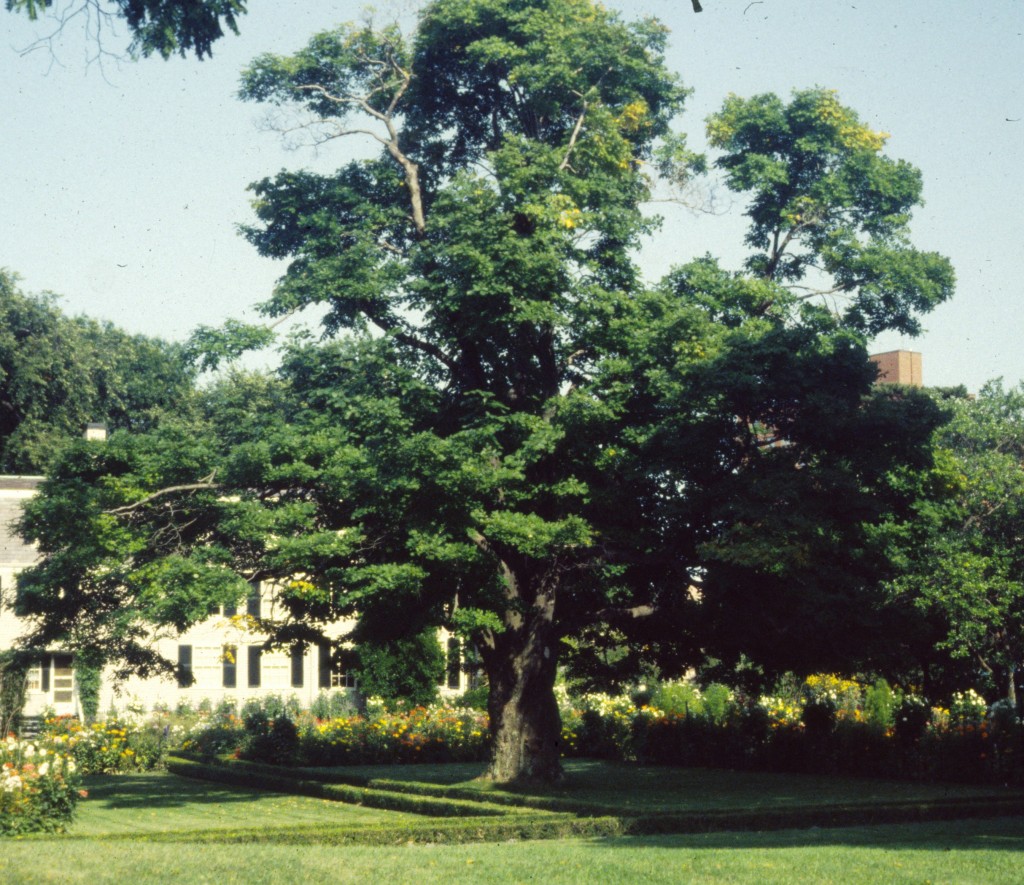
Native primarily to western North Carolina to Kentucky and Tennessee, but also reported in isolated parts of Alabama, Arkansas, Missouri, and Oklahoma these generally rare Yellowwoods may grow 30–50-feet high, with a broad, rounded crown. This is a tree Andre Michaux (1746-1802), French botanist and explorer is credited with first discovering in 1796 while in Tennessee. Appointed as the French royal botanist in North America by Louis XVI (1754-1793), Michaux spent eleven years here (1785-1796) in search of plants, setting up nurseries in New Jersey and South Carolina. So respected during his time here, members of the American Philosophical Society promised Michaux financial backing to explore all the way to the Pacific Ocean. Instead, due to diplomatic politics, that famous endeavor would later be assigned by Thomas Jefferson to Lewis and Clark.
Michaux’s botanical work led to Flora Boreali-America (The Flora of North America) and The Oaks of North America, as well as describing and naming several dozen new genera. One rare new wildflower he discovered, among many others, was the Oconee bells, Shortia galacifolia. Harvard University’s great botanist Asa Gray (1810-1888) [Lot 3904, Holly Path], in one of the great plant mysteries of the 19th Century, eventually named this elusive evergreen years later with the help of a dried herbarium specimen Michaux had originally collected.
Well back to our Yellowwoods, these are trees that flower heavily only every two or three years, so take a few extra moments to savor their spectacular flair when they are at their finest.
On your June visit to Mount Auburn look for them on Central Avenue, Lawn Avenue, Fountain Avenue, Yew Avenue, Larch Avenue, Clematis Path, Eglantine Path, Thistle Path, Euonymus Path, Pond Road, Story Road and Field Road.
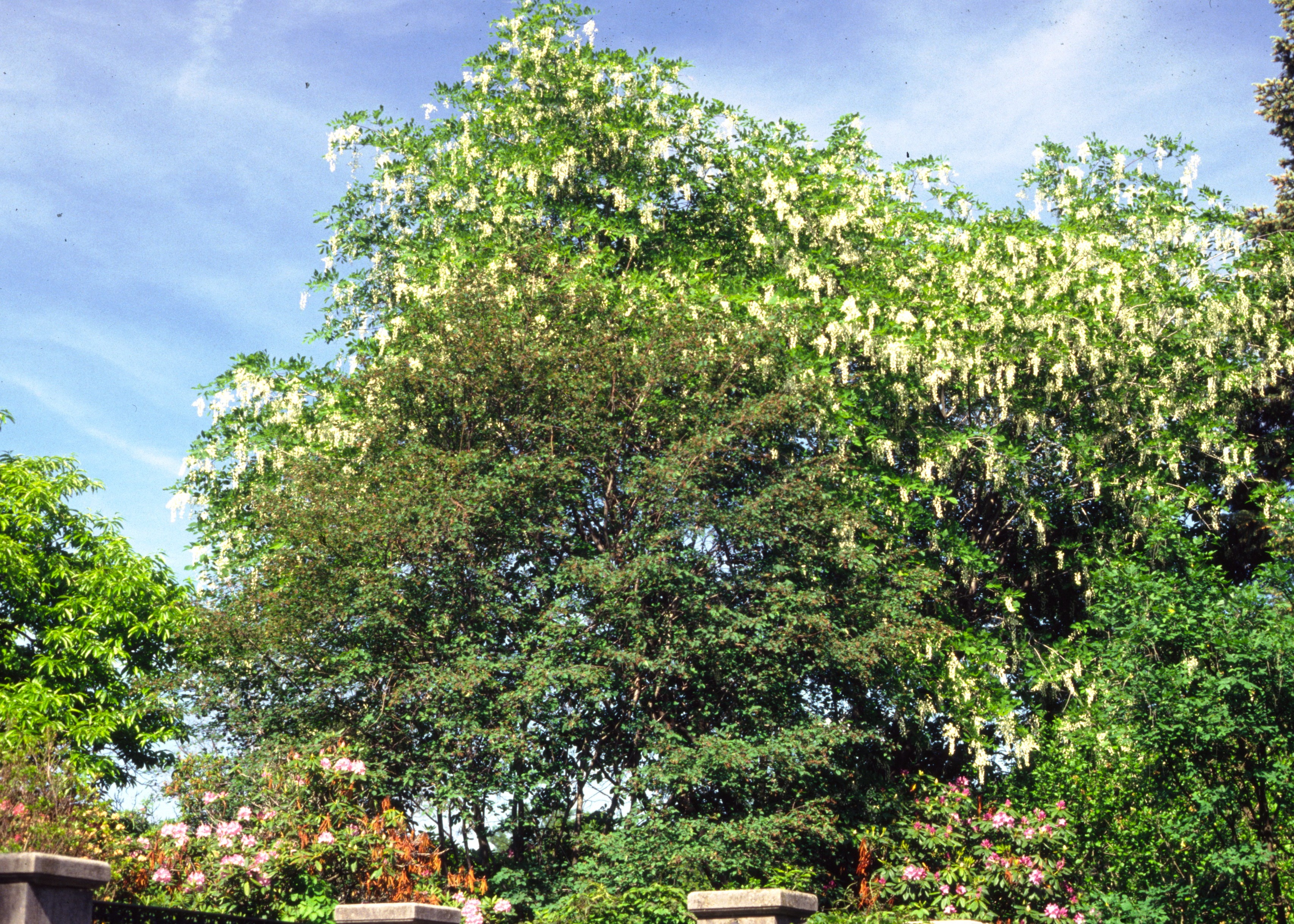
Oh, how your moonlit arms are comparable to white wisteria
Mark Heathcote
Waving in the air, twisting around my waist…
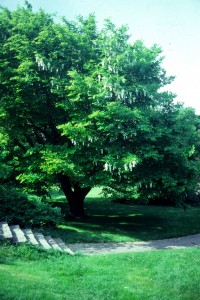
Wearing the white flower of a blameless life,
Alfred Lord Tennyson
Before a thousand peering littlenesses,…
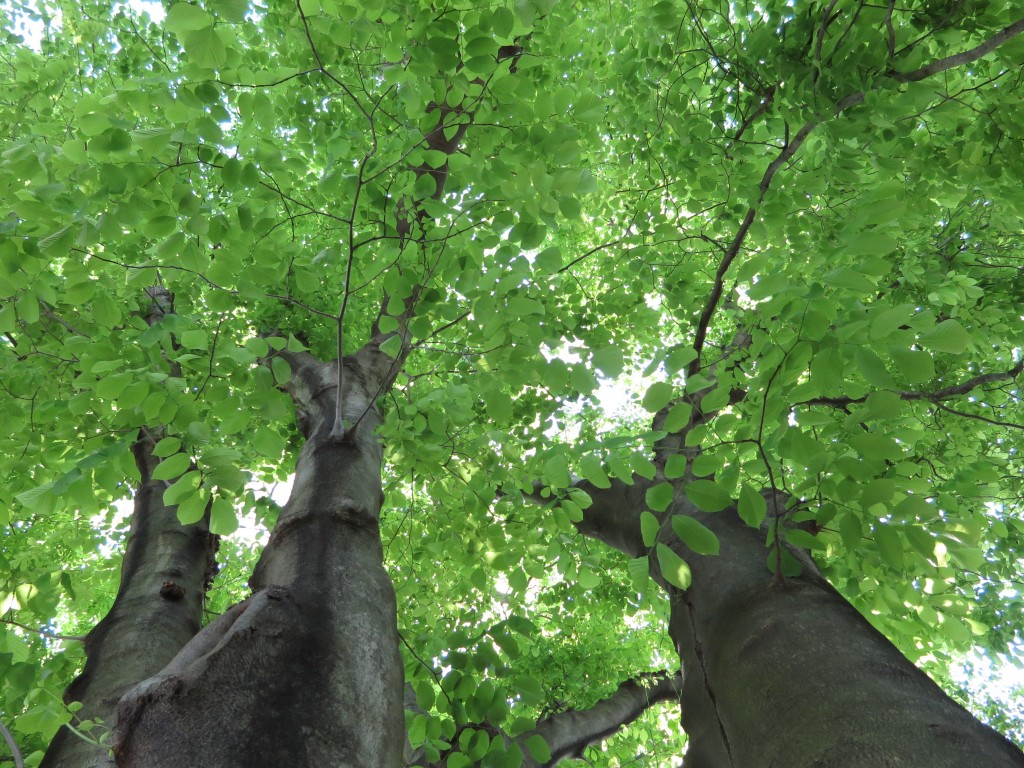
Everywhere bees go racing with the hours,
Vita Sackville-West
For every bee becomes a drunken lover,
Standing upon his head to sup the flowers…
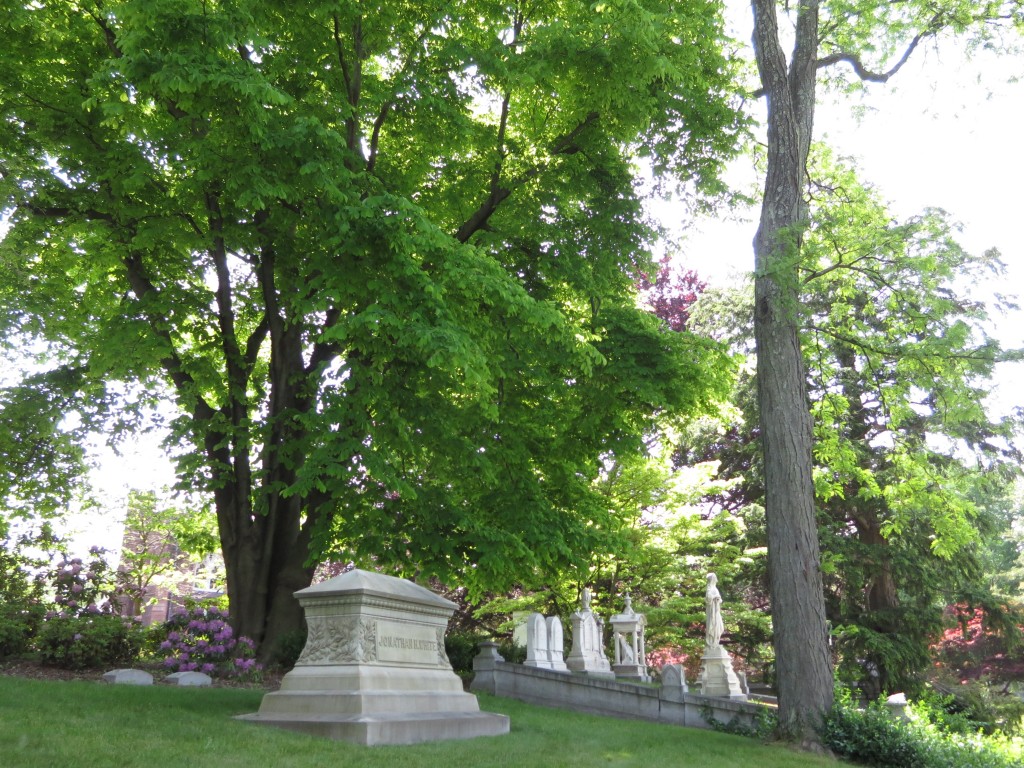
Trees grow tall and with stiffened trunk[s] let their limbs relax and be waved and tossed at the will of the wind.
Charles Burchfield






Leave a Reply